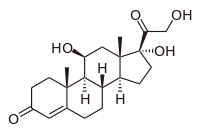
Photo from wikipedia
Protein crystallization is a prevalent phenomenon existing in the formation of intricate protein-assembled structures in living cells. Whether the crystallization of a protein would exert a specific biological function, however,… Click to show full abstract
Protein crystallization is a prevalent phenomenon existing in the formation of intricate protein-assembled structures in living cells. Whether the crystallization of a protein would exert a specific biological function, however, remains poorly understood. Here, we reconstructed a recombinant galectin-10 (gal-10) protein and artificially engineered a gal-10 protein assembly in two distinguishable states: i.e., an insoluble crystalline state and a soluble state. The potency of the gal-10 protein in either the crystalline state or the soluble state to induce chemokine or cytokine release in the primary human nasal epithelial cells and nasal polyps derived from chronic rhinosinusitis patients with nasal polyps was investigated. The crystalline gal-10 upregulated the gene expression of chemokines or cytokines, including IL-1β, IL-6, IL-8, TNF-α, and GM-CSF, in patient-derived primary cells and nasal polyps. In contrast, soluble gal-10 displayed a diminished potency to induce inflammation. Our results demonstrate that the gal-10 protein potency of activating inflammation is correlated with its crystalline state.
Journal Title: Nano letters
Year Published: 2022
Link to full text (if available)
Share on Social Media: Sign Up to like & get
recommendations!